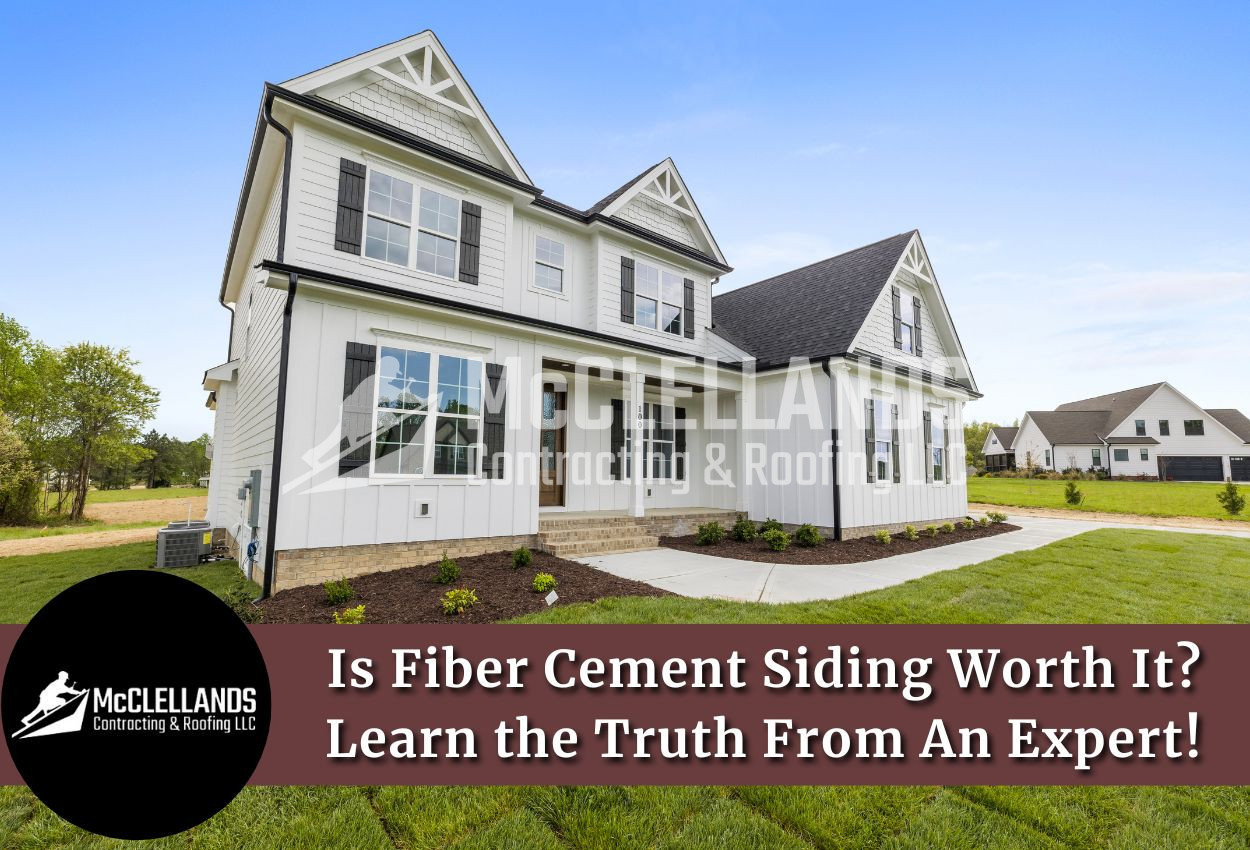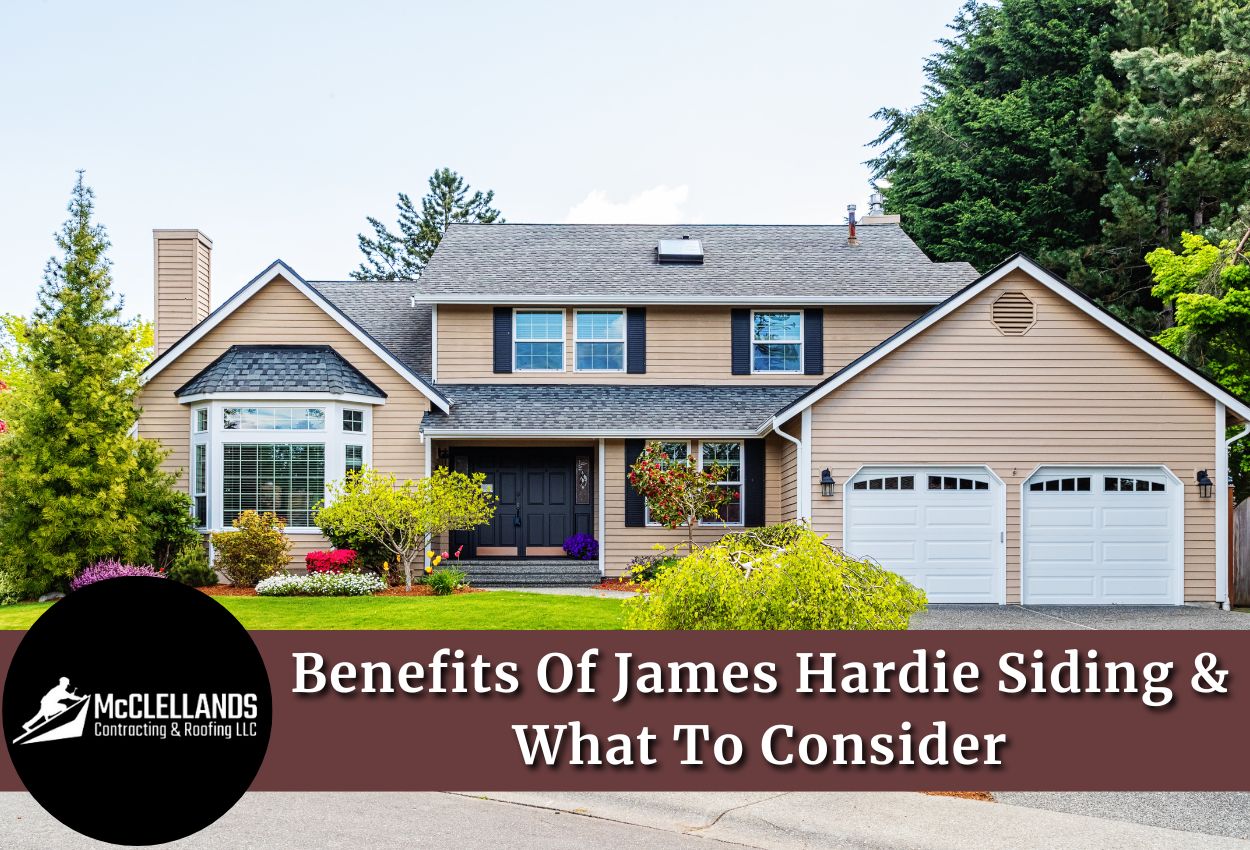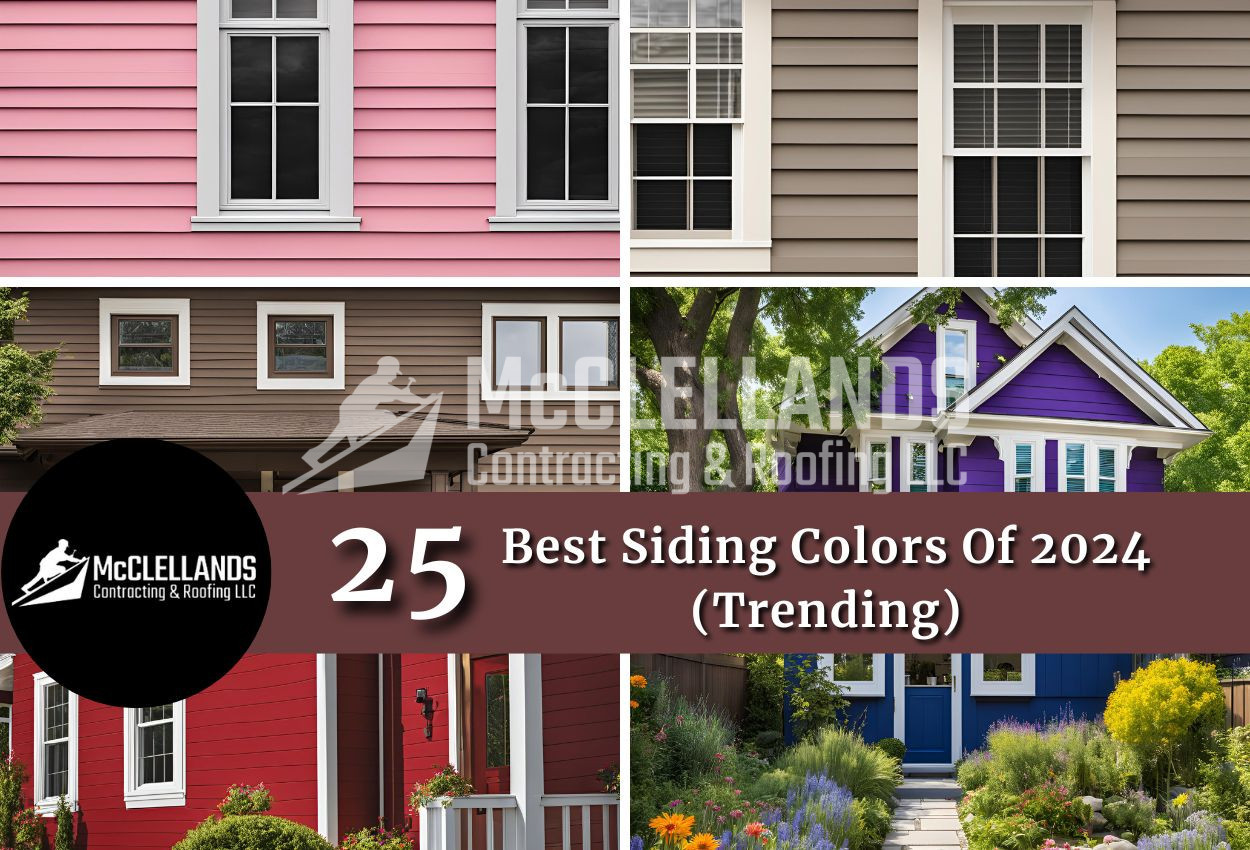Fiber cement siding has been making waves in the construction industry, rapidly gaining popularity due to its remarkable attributes and versatility. As an industry expert, I have had the privilege of closely examining this material and comparing it with other siding options.
In this blog post, I will shed light on the significant pros and cons of fiber cement siding, and compare it with alternative materials to provide you with a comprehensive understanding of whether it's truly worth the investment.
The Invention of Fiber Cement: A Durable and Weather-Resistant Alternative
Fiber cement building products were invented to address the need for durable, low-maintenance, and weather-resistant building materials. The invention of fiber cement siding dates back to the early 20th century, with James Hardie as the pioneering entrepreneur. James Hardie started developing fiber cement panels to overcome the shortcomings of traditional siding materials such as wood, which is susceptible to rot, termites, and warping; and vinyl, which can be brittle and less resistant to extreme weather conditions.
Let’s see what’s special about the composition of this advanced siding material.
What Is Fiber Cement Siding? Understanding Its Composition
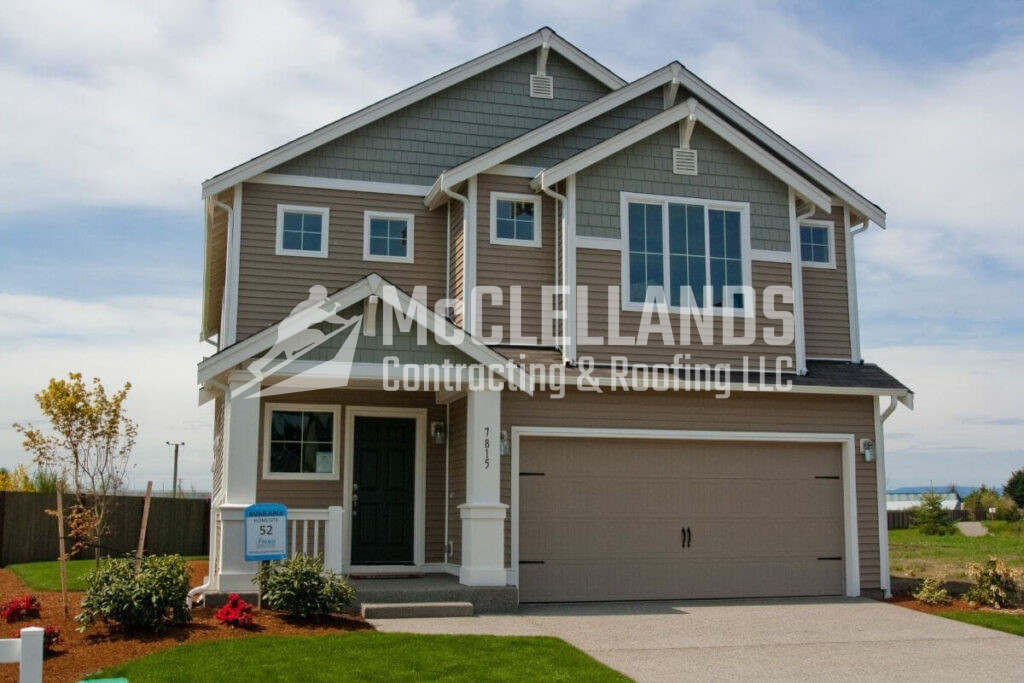
Fiber cement is a composite material made primarily from a mixture of cement, sand, and cellulose fibers. These fibers, often sourced from wood pulp, are responsible for giving the material its characteristic strength and flexibility. The manufacturing process involves combining these components with water and other additives to form a slurry.
Next, this slurry is layered and pressed to form sheets. The sheets are then subjected to a curing process, during which they gain their structural integrity and durability. The final step involves adding texture and finishes to replicate the appearance of wood, stucco, or masonry, providing homeowners with versatile aesthetic options.
What Sets Fiber Cement Boards Apart from Traditional Siding Materials
Here are some advanced features that make fiber cement siding the new favorite:
#1 Durability
Fiber cement panels boast exceptional durability, withstanding harsh weather conditions, including heavy rain, snow, and intense sunlight. Its resistance to rot, warping, and pests makes it a compelling choice for homeowners seeking a low-maintenance and long-lasting siding solution.
#2 Versatility In Design
The manufacturing process of fiber cement boards allows for a wide range of design options. From smooth to textured finishes and various colors, homeowners have the flexibility to achieve their desired aesthetic, be it modern, traditional, or rustic. We’ll take a look at popular styles later in this blog post.
#3 Fire and Moisture Resistance
One of the key advantages of fiber cement panels is their resistance to fire and moisture. Unlike wood siding, which is susceptible to fire, fiber cement is non-combustible, providing an added layer of safety for your home.
#4 Environmentally Friendly
Using fiber cement products is an environmentally conscious choice. It's made from sustainable and readily available raw materials, and its longevity ensures fewer replacements over time, reducing the overall environmental impact.
#5 Impact Resistance
Fiber cement panels are renowned for their remarkable strength, making them highly resistant to impact from hail, wind-blown debris, and everyday accidents. These boards can withstand forceful impacts without denting or breaking, maintaining their aesthetic appeal even under stress.
#6 Performance in Storm-Prone Areas
Fiber cement is a preferred choice for homes in storm-prone areas due to its ability to endure extreme weather conditions, including harsh winds, heavy rain, and hail. Its resistance to moisture prevents swelling or warping of the boards, ensuring its longevity even in wet climates.
#7 Resistance to Extreme Temperatures
Fiber cement boards exhibit excellent thermal stability, minimizing expansion and contraction with temperature changes. Hence, fiber cement siding boards retain their shape and structural integrity, whether in intense heat or freezing cold. Being able to adapt to diverse weather makes it a versatile choice, suitable for homes across different geographical locations.
Are There Any Downsides to This Siding Material?
The installation of fiber cement panels always requires professional expertise and is not ideal for DIY projects. Additionally, some kinds of boards may be heavy, which might necessitate additional structural support or modifications during installation.
Remember, investing in a home improvement project such as new siding requires a clear understanding of the costs involved. If you’re wondering how much this sturdy material costs, we’ve provided the cost below.
Understanding the Cost of Fiber Cement Siding
On average, for a typical 1,500-square-foot home the total cost of fiber cement siding installation can range from $10,000 to $25,000. However, it's essential to obtain detailed quotes from reputable contractors in your area to get an accurate estimate based on your taste and requirements.
Here’s a breakdown of the factors that affect the total cost:
Siding Materials
Fiber cement panels typically range from $5 to $10 per square foot. The variation in price depends on the brand, quality, style, and whether it's pre-painted or requires painting on-site.
Installation Costs
The installation or labor charges usually account for a significant portion of the overall expense. On average, installation costs can range from $4 to $9 per square foot. Complex installations or intricate designs may lead to higher labor charges.
Removal of Existing Siding
If you have old siding that needs to be removed before installing fiber cement siding, this can add to the cost. Removal costs can range from $1 to $3 per square foot.
Painting and Finishing
If the boards aren’t factory-finished and need painting or finishing, this will incur additional costs. Pre-painted options may have a higher upfront cost but allow you to save on painting and later expenses.
Keep these cost considerations in mind, and you’ll be able to make a more cost-effective decision.
Comparing Fiber Cement To Other Siding Materials
Let’s unravel the truth about how fiber cement stacks up against some of the other options out there for siding, ensuring you're equipped with the knowledge needed to make a well-informed choice for your home.
1. Fiber Cement vs. Vinyl Siding
- Durability: While vinyl siding is relatively durable, fiber cement outshines it in terms of resilience and resistance to impact and weather.
- Aesthetics: Fiber cement can closely mimic the appearance of wood, providing a high-end aesthetic that rivals the look of vinyl siding.
- Maintenance: Vinyl siding requires less maintenance, but fiber cement's longevity compensates for the periodic maintenance it needs.
2. Fiber Cement vs. Wood Siding
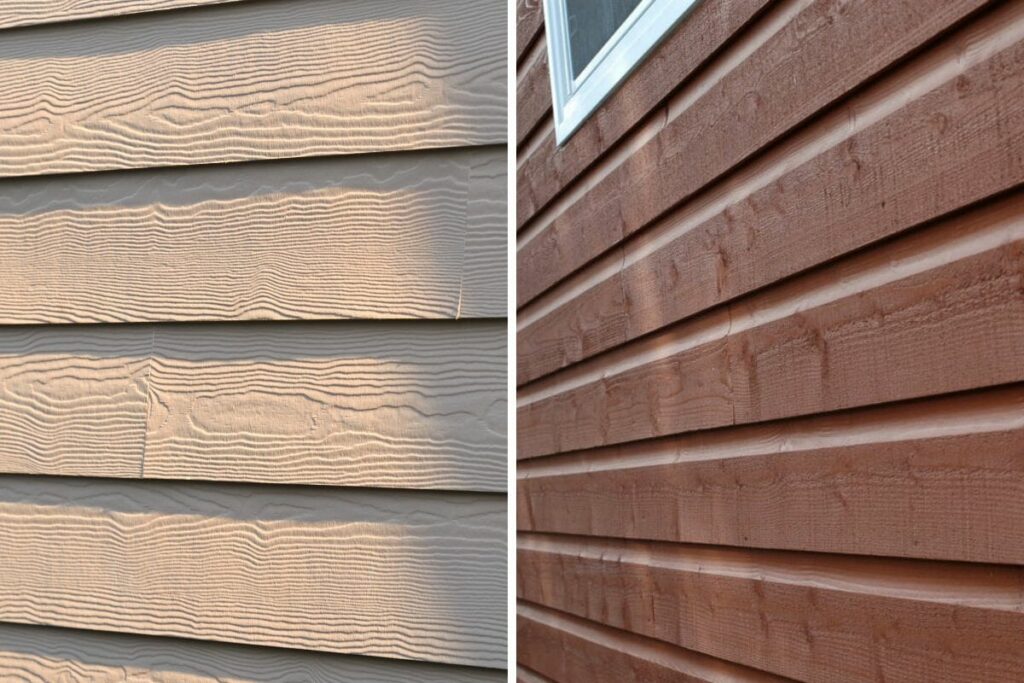
- Durability: Fiber cement surpasses wood in terms of durability, resistance to decay, insects, and rot, which are common issues with wood.
- Maintenance: Wood siding demands regular maintenance, including painting and sealing, making fiber cement a more low-maintenance option.
- Cost: While initially more expensive than wood, fiber cement proves itself to be more cost-effective over its lifespan due to reduced maintenance and longevity.
3. Fiber Cement vs. Brick Siding

- Durability: Brick siding is highly durable, but fiber cement is also resilient and offers a similar lifespan at a lower cost.
- Installation and Cost: Fiber cement is typically more cost-effective and easier to install compared to traditional brick siding, providing a similar aesthetic appeal.
4. Fiber Cement vs. Stucco
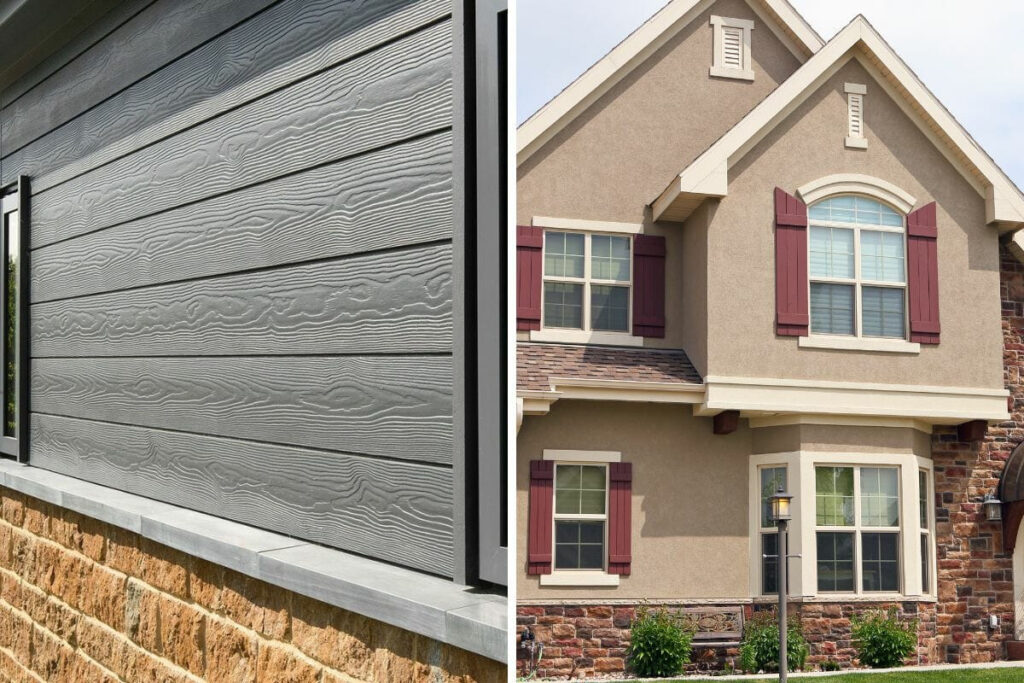
- Durability: Both materials offer good durability, but fiber cement has a slight edge in terms of resistance to impact and weather.
- Aesthetics: Stucco provides a unique textured look but isn’t typically able to mimic other styles. On the other hand, fiber cement can imitate various finishes, giving homeowners more design options.
- Maintenance: Fiber cement requires less maintenance compared to stucco, making it a practical choice for those seeking longevity with minimal upkeep.
Answering the Question: Is Fiber Cement Siding Worth It?
I’ve been working with brands like James Hardie for years, and I highly recommend fiber cement siding to homeowners. It emerges as the strongest contender when compared to other popular siding materials. While the initial investment might be slightly higher than some alternatives, the long-term benefits, including reduced maintenance and prolonged lifespan, make it a worthwhile investment.
However, like any home improvement project, careful planning and consideration of several key factors are crucial to ensure a successful and long-lasting installation.
Fiber Cement Siding Installation: Things to Keep in Mind
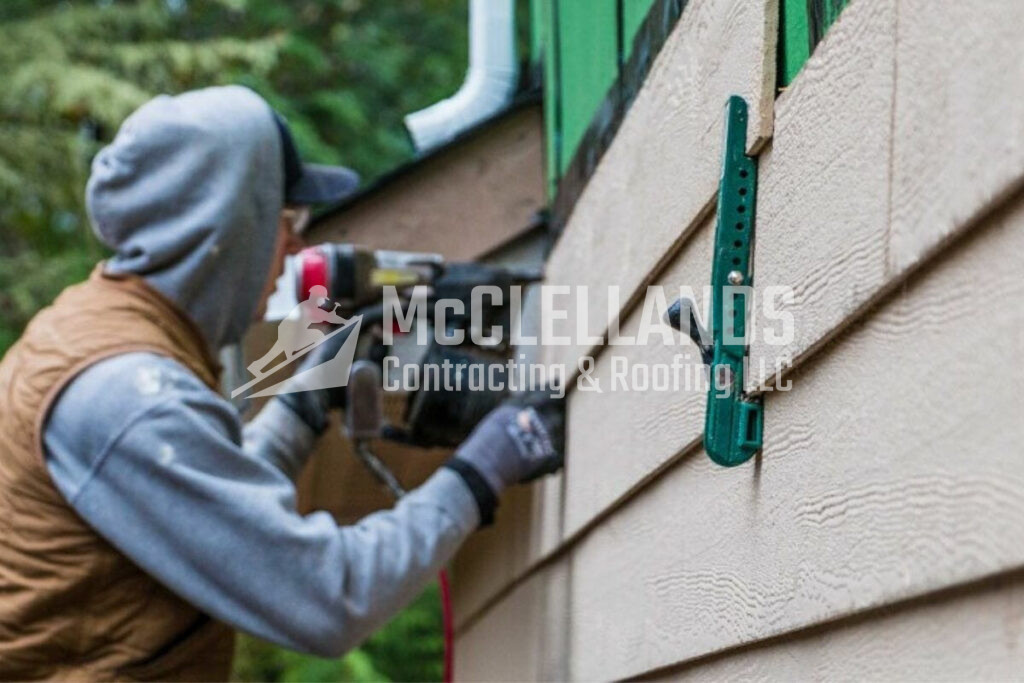
Let me guide you through some essential considerations to make your fiber cement siding installation a smooth process.
1. Professional Installation
Installing fiber cement boards is intricate and demands skill and expertise. Hiring a professional contractor with experience in fiber cement ensures proper installation, minimizing errors and maximizing the siding's performance and lifespan.
2. Climate and Weather Conditions
You can install this siding in any season. However, if you are replacing your old siding, make sure the weather is dry so that your home’s foundation doesn’t get affected by moisture and debris during the installation process.
3. Preparation and Repairs
Prior to installation, ensure that your home's exterior is prepared adequately. Any existing damage, rot, or mold should be addressed and repaired. A sound and well-prepared surface is vital for the optimal performance and longevity of your home’s siding.
4. Ventilation and Moisture Management
Adequate ventilation is critical to prevent moisture buildup behind the siding, which can lead to mold and decay. Ensure your installation plan includes adequate ventilation and a moisture management system to protect your home's structure.
5. Maintenance and Longevity
Understand the maintenance requirements of your fiber cement product and factor them into your decision-making. While it’s low-maintenance compared to some materials like wood, regular inspections, and an occasional cleaning will extend its lifespan and preserve its appearance.
6. Local Building Codes and Regulations
Familiarize yourself with local building codes and regulations related to siding installation. Compliance with these rules is essential to ensure a safe and legal installation. Your chosen contractor should be well-versed in local requirements.
If you are looking to install fiber cement siding in Pennsylvania, we’re here to help!
Explore the Best Fiber Cement Siding Options in Pennsylvania
At McClellands Contracting and Roofing LLC, we’re here to help you make the right choice for your home. Our team is experienced and skilled in installing James Hardie fiber cement siding, and we’d be happy to provide you with a flawless siding replacement service in Pennsylvania. So, call us at (412) 353-5660, to discuss your project with one of our experts, and discover how we can transform your home’s exterior.

